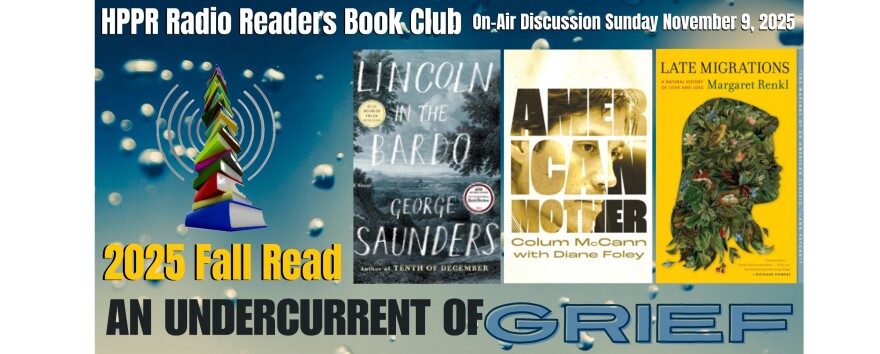Hi, I am Marco Macias, a history teacher here at Fort Hays State University. Thank you for tuning in, and welcome to a Radio Readers BookByte of The Blue Book of Nebo by Manon Steffan Ros. In this deeply evocative novel, the author immerses readers in the sensory experiences of life after a catastrophic event in post-apocalyptic Wales. The story follows a mother, Rowenna, and her teenage son, Dylan, as they navigate their isolated existence, capturing the sights, sounds, and tactile sensations of a world transformed by disaster.
Told through the alternating perspectives of Dylan and Rowenna, the novel invites readers into their intimate world, where every detail of their surroundings takes on heightened significance. The barren landscape of Nebo is described with vivid imagery—the rustling of leaves in overgrown gardens, the eerie silence of abandoned homes, and the rough texture of soil under their fingertips as they work to cultivate their own food. These sensory details ground the reader in the stark reality of their lives, making the isolation and desolation they experience feel palpable.
The setting plays a crucial role in evoking the sensory atmosphere of the novel. The descriptions of the Welsh countryside—its harsh winds, the smell of damp earth after rain, and the sight of the sea stretching out to the horizon—create a strong sense of place that is both haunting and beautiful. The natural world, which has reclaimed much of the land, is depicted in all its rawness, with the changing seasons and unpredictable weather further emphasizing the precariousness of life after "The End."
Language and culture are also explored through a sensory lens. The novel, originally written in Welsh, retains its cultural richness in the English translation, with Welsh phrases and references enhancing its unique history. The sounds of the Welsh language, its rhythms, and its connections to the past add depth to the characters' identities, highlighting the importance of heritage in a world where so much has been lost.
The relationship between Dylan and Rowenna is portrayed through the sensory details of their daily lives. The warmth of a shared fire, the smell of cooking food, and the quiet moments of companionship as they sit together in the garden all serve to deepen their bond. These experiences are interwoven with their memories of the past, creating an emotional contrast between the world that was and the world that remains.
The style is both spare and rich, carefully selecting details that evoke the texture of their reality—whether it’s the feel of damp clothes against skin, the taste of a simple meal, or the sight of a storm approaching over the mountains. This focus on the sensory aspects of their world makes the novel an immersive experience, drawing readers into the physical and emotional landscape of the characters.
The Blue Book of Nebo is not just a story of survival but can be viewed as a meditation on the sensory experiences that define our connection to the world and each other. Through the vivid portrayal of post-apocalyptic Wales, the novel explores how the senses ground us in our identities, our memories, and our relationships. It’s a powerful, immersive read that lingers in the senses long after the story ends.










